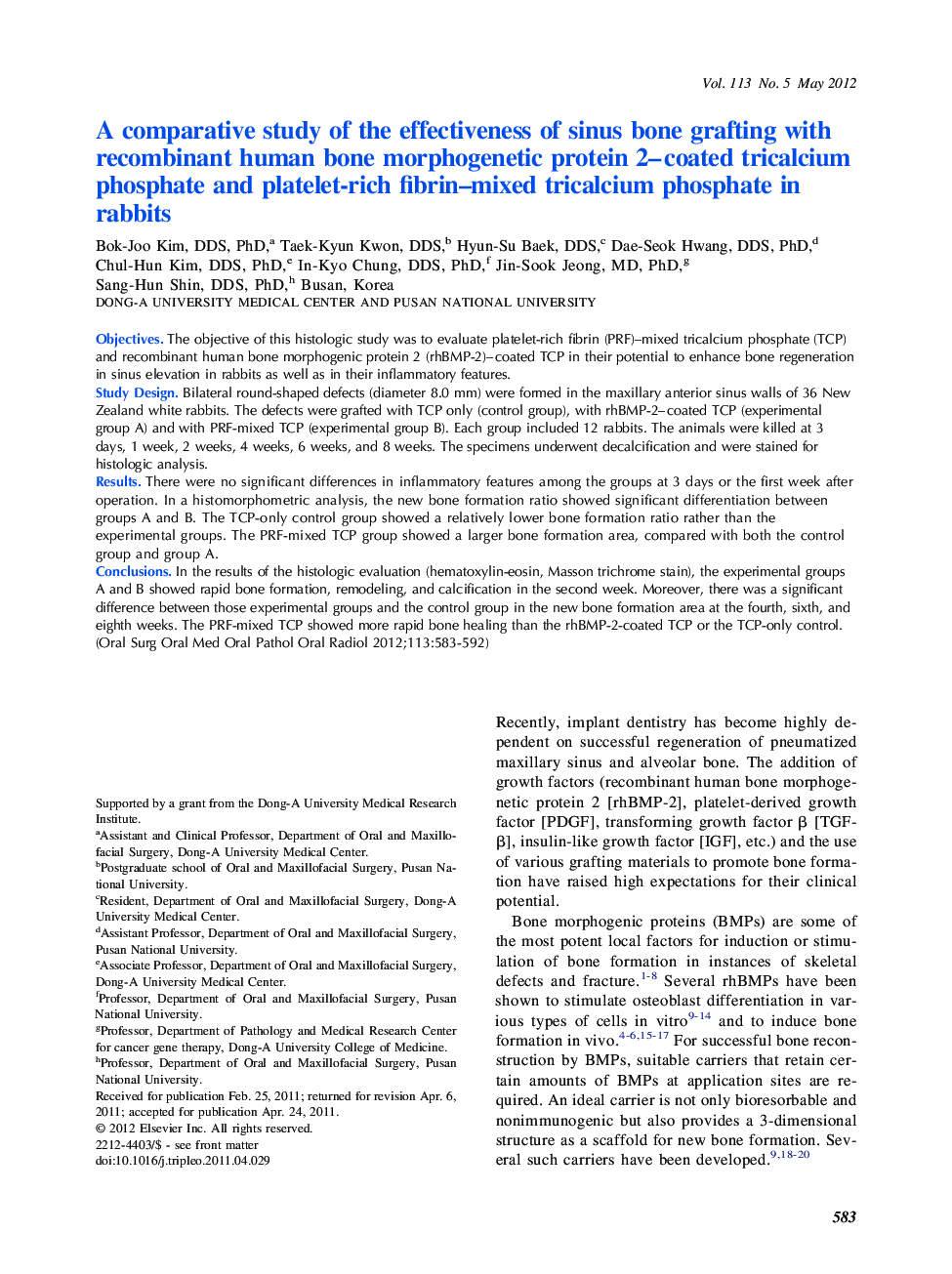| Article ID | Journal | Published Year | Pages | File Type |
|---|---|---|---|---|
| 6059013 | Oral Surgery, Oral Medicine, Oral Pathology and Oral Radiology | 2012 | 10 Pages |
ObjectivesThe objective of this histologic study was to evaluate platelet-rich fibrin (PRF)-mixed tricalcium phosphate (TCP) and recombinant human bone morphogenic protein 2 (rhBMP-2)-coated TCP in their potential to enhance bone regeneration in sinus elevation in rabbits as well as in their inflammatory features.Study DesignBilateral round-shaped defects (diameter 8.0 mm) were formed in the maxillary anterior sinus walls of 36 New Zealand white rabbits. The defects were grafted with TCP only (control group), with rhBMP-2-coated TCP (experimental group A) and with PRF-mixed TCP (experimental group B). Each group included 12 rabbits. The animals were killed at 3 days, 1 week, 2 weeks, 4 weeks, 6 weeks, and 8 weeks. The specimens underwent decalcification and were stained for histologic analysis.ResultsThere were no significant differences in inflammatory features among the groups at 3 days or the first week after operation. In a histomorphometric analysis, the new bone formation ratio showed significant differentiation between groups A and B. The TCP-only control group showed a relatively lower bone formation ratio rather than the experimental groups. The PRF-mixed TCP group showed a larger bone formation area, compared with both the control group and group A.ConclusionsIn the results of the histologic evaluation (hematoxylin-eosin, Masson trichrome stain), the experimental groups A and B showed rapid bone formation, remodeling, and calcification in the second week. Moreover, there was a significant difference between those experimental groups and the control group in the new bone formation area at the fourth, sixth, and eighth weeks. The PRF-mixed TCP showed more rapid bone healing than the rhBMP-2-coated TCP or the TCP-only control.
